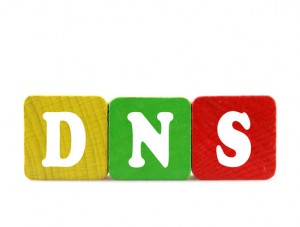
In September, 2012, GoDaddy experienced one of the worst outages in its history. Within minutes, millions of websites hosted by the company could not be reached due to a network communication error. Hundreds of business owners lost sales and consumer confidence because of the outage. Why is it important to choose a good DNS provider?
Overview of DNS
Let’s begin with an overview of what DNS is for the sake of those who are not too techie. To access any website, you simply need to type its URL on a browser to reach its servers. To get to the website, computers have to identify where they are hosted on the web and this is where DNS comes in. Computers identify website servers through numerical IP addresses (e.g.46.137.96.191) and output the results in form of the domain name and website content you access. Every domain name has a numerical IP and when the IP address cannot be accessed by a web server, users cannot also reach the website.
There are many things that can cause DNS problems. Human and system errors can occur when you least expect and disrupt user experience. Your website may not necessarily have the problem but it can be affected by network failures caused by other websites or applications hosted in your host’s servers.
Choosing a DNS Service Provider
Before you choose a DNS service provider, find out about their uptime and downtime. Ideally, you should settle for nothing less than 99% uptime and 99.9% is what you should shoot for critical services. Apart from uptime, you want to check whether the provider offers backup services for redundancy. Some hosts provide backup as add-on feature while others offer it as part of their primary package.
Regardless of how much traffic you get, you need backup to ensure your services won’t be interrupted in case of failure of the primary DNS. When a backup DNS is configured, your website will always be online even in case of network problems of your primary DNS. For instance, in the GoDaddy case, websites that had backup DNS were still accessible unlike those that did not have backup.
When the primary DNS goes off, the backup DNS will switch on ensuring uninterrupted access to your site. As long as the backup DNS is working, your site will remain online. You can even re-route traffic in case of an emergency. Without a backup DNS, your site’s uptime is left entirely at the mercy of your hosting company and there is nothing you can do when problems come up.
Check your Site Uptime
There are free and commercial tools you can use to monitor your website’s uptime. Most of the free work just as well as the paid ones. Here are four free tools you can use to monitor your site’s uptime:
- Pingdom. The service enables you to watch your site’s uptime and receive free SMS and email alerts in case of downtimes.
- Uptime Robot. You can monitor up to 50 sites with this services for free. Alerts are sent via RSS, Twitter, SMS or email.
- tagBeep. Monitor up to 50 sites for free and receive SMS and email alerts in case of downtimes.
- Service Uptime. Check your site after every 30 minutes with this service and receive SMS or email alerts in case of problems.
Service interruptions due to outages can stifle the revenues of any cloud company. Before you choose a hosting company, find out what the company has to cushion your site from experiencing outages.




